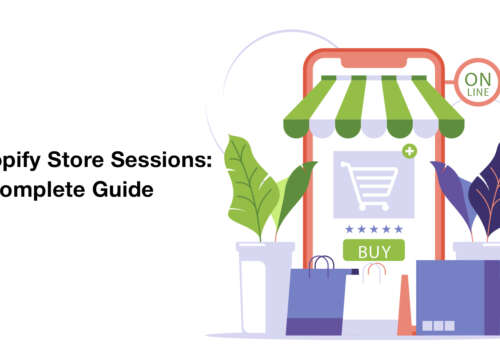Shopify product page design practices are detailed here for helping to create well-managed online eCommerce stores.
Best Practices for Shopify Product Page Design
For e-commerce store owners, the product page is more than just a listing. It’s a critical touchpoint where potential customers decide whether to make a purchase. Optimizing this page can significantly enhance conversions and create a seamless shopping journey for your visitors. And when you have Shopify eCommerce with you, Shopify development can help enhance page engagement.
In this article, we’ll explore key strategies to maximize the effectiveness of your e-commerce product pages, transforming casual browsers into loyal buyers. Let’s find out about the elements that are the best practices
Mapping Out Project Page Element
Creating an e-commerce page optimized for conversions begins with understanding the elements that successful online stores incorporate into their product pages. More to this, the page requirement of different pages will differ as per the serving needs to the specific industry. Following are the elements that would form the most essential part of every eCommerce product page.
- Navigation and logo
- Product thumbnails
- Product title
- Product image
- CTA
Product Photo Highlight
Having a product image is a much-needed attribute in every eCommerce product page. As images hold users for longer on a product page, it is important that these images are engaging. Added to that the content on the required filed explaining the attributes of the product needs to be in sync with the images displayed on the page.
User-friendly Design
The design of a product page is pivotal in driving conversions. It is crucial for leaving a positive initial impression that encourages further exploration. Effective product pages feature intuitive, visitor-friendly, and visually appealing designs. These elements not only captivate visitors but also direct them seamlessly through their shopping journey. A simple easy-to-navigate layout with compelling elements and easy navigation is key to enabling visitors to quickly access all necessary information.
Clear Call to Actions
A decisive call to action (CTA) is critical for boosting conversions on product pages. On Shopify, this often means strategically positioning an “Add to Cart” or “Buy Now” button. A clear CTA like guides visitors on what action to take once they’re persuaded to make a purchase. With an appealing CTA, the visitors are most likely to make a purchase, which other may not happen for a lot of pages.
Engaging Product Display
Prospective customers are unlikely to make a purchase without a clear understanding of product. They, in advance would like to know what the product looks like. Successful product pages go beyond using stock images alone. They aim to capture customer’s interest with high-quality product images, videos, and interactive media.
Detailed and well-designed product images from various angles effectively showcase your offerings. Additionally, videos illustrate the product in use, aiding customers in visualizing its potential applications.
Eye-catching description
A captivating product description extends beyond just listing products and its features. There are certain specifications that must be addressed when featuring these descriptions. It should be engaging and customized to resonate with the intended audience.
A carefully crafted product description emphasizes the distinctive advantages of the product. It also accommodates value proposition and list of benefits for users. Added to all this, it also addresses potential customer queries and demonstrates how the product effectively addresses their needs.
Product Information in a Detailed Way
An effective product page that drives conversions should provide thorough information. It must accommodate details about the product, including dimensions, materials, specifications, and any pertinent certifications or warranties. This comprehensive detail aids customers in making informed decisions. This reduces the chances of any doubts or uncertainties that could deter their purchase.
Customer Review and Proof
Incorporating customer reviews and social proof into product pages is an exceptional strategy. This helps in establishing trust and credibility. By showcasing authentic customer reviews, ratings, and testimonials, you provide social proof that reinforces potential buyers’ confidence in the product’s quality.
Positive reviews serve as endorsements that significantly impact purchasing decisions. As consumers, people always place their trust in the experiences of their peers. This approach is underscored by numerous marketing agencies and that is why reviews and customer feedback are given utmost importance. These reviews could greatly influential consumer purchasing behaviour.
FAQ Page
Incorporating a dedicated Frequently Asked Questions (FAQ) section on the product page is essential for addressing common customer inquiries. This instils their trust in services. This feature enables potential buyers to quickly access answers to their queries. It helps answering concerns and facilitating informed purchasing decisions for users.
It is possible that a large section of consumers may abandon their online purchases if they cannot promptly find answers to their questions. By providing a readily accessible FAQ page, these users can be hold for long.
Use Customer’s Photos in Reviews
Investing in high-quality photos for your website is a wise decision. But have you considered the impact of customer photos? Despite your efforts in obtaining professional images, leveraging customer-generated content can significantly influence purchasing decisions.
In several studies, it was found that two-thirds of buyers actively seek out customer photos before committing to a purchase. These authentic visuals provide potential customers with real-life perspectives and enhance trust by showcasing how products appear in everyday scenarios. Integrating customer photos alongside professional imagery can enrich your product pages. This can easily foster a deeper connection with your audience. These steps ultimately boost sales and customer satisfaction.
Optimizing Image Metadata
Many e-commerce stores are not capable of going excellent with product images. Although platforms like Shopify and BigCommerce facilitate image compression and proper aspect ratios, there are several additional best practices you should consistently follow to enhance your product visuals.
Firstly, invest in high-resolution images to ensure clarity and detail. Added to that, it is critical to capture your products in the best possible light. Utilize consistent lighting and backgrounds to maintain a cohesive and professional look across all images.
Secondly, optimize image file sizes to balance quality and load speed. Fast-loading images contribute to a better user experience and can positively impact your search engine rankings. In addition to all this while optimizing meta data, it is important to correct ALT tags, ensure appropriate title tags, and showcase a relevant file name.
In Conclusion
Having a Shopify store and a well-established product page is not all. You must consider regular Shopify maintenance and support services. This would ensure the reliability of the store. Regular maintenance services are also important to keep your website up-to-date.
In this guide, we’ve explored the key elements that contribute to a well-designed product page. The outlined actionable steps that you can take to enhance your customers’ shopping experience are proven for success.
With the insights provided here, you now have a set of practical suggestions to improve your product pages. From optimizing high-quality images to crafting compelling descriptions and incorporating customer reviews, these tips are designed to drive engagement and conversions.
By implementing these enhancements, you’ll be well on your way to boosting sales and creating a more enjoyable shopping experience for your customers.












